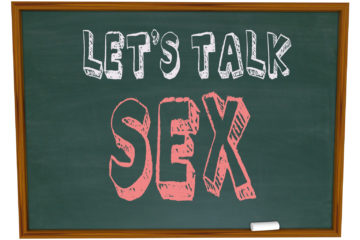Are you experiencing desire discrepancy in your relationship?
If so you are not alone. Desire discrepancy is common.
One partner may feel constantly ready for intimacy, while the other struggles to find motivation or interest. It’s a frustrating cycle that can leave you both feeling frustrated and disconnected.
Here are 4 tips you can start right away to address desire discrepancy:
1. Accept Your Differences
The first step in addressing this issue is to accept that you and your partner have unique sexualities and sex drives. There’s no one-size-fits-all when it comes to desire, and that’s perfectly okay. Embrace the fact that you’re different and that there’s no need to force yourselves to be on the same page. This acceptance will lay the foundation for finding a healthy balance in your relationship.
2. Slow Down and Bridge the Gap
Once you’ve accepted your differences, it’s time to slow everything down. The partner with the higher libido may be inclined to rush into intimacy, while the other person needs more time and preparation. This is where the concept of the “bridge” comes into play.
The bridge is a crucial step in helping the partner with the slower libido transition from your head to your body. It could be something as simple as a romantic dinner, a long conversation, or a relaxing bath. The key is to create an environment and experience that allows you to become more present and connected to your physical sensations.
By slowing down the process and focusing on the quality of your intimate moments, rather than just the quantity, you can create a more fulfilling and satisfying experience for both partners. This approach helps to bridge the gap between your differing desires and ensures that everyone’s needs are being met.
2.Communication
Effective communication is essential for overcoming desire discrepancy. It’s important to have open and honest dialogues about your needs, desires, and boundaries, both inside and outside the bedroom.
Learning how to have intimate conversations can be challenging, but it’s a crucial skill to develop. Discuss your preferences, what feels good, and what might be holding you back from fully engaging in intimacy. This mutual understanding and vulnerability can help create a safe and nurturing space for your sexual and emotional connection to thrive.
Additionally, communicating about your needs in the moment can be incredibly helpful. If something isn’t feeling quite right, or if you need more arousal or stimulation, don’t be afraid to speak up. This honest feedback can help you both explore new techniques and find ways to enhance your intimate experiences.
3. Exploring New Techniques
While communication is the foundation, incorporating new techniques can also be a game-changer in addressing desire discrepancy. If you and your partner feel like you’ve fallen into a rut or are lacking in certain areas, it may be time to explore some new approaches.
This could involve learning about different types of touch, experimenting with new positions, or trying out various forms of foreplay. The goal is to find ways to make the intimate experience more engaging, pleasurable, and fulfilling for both partners.
Remember, there’s no one-size-fits-all solution when it comes to intimacy. What works for one couple may not work for another. Be open to trying new things, and don’t be afraid to seek guidance or resources to help you on your journey.
4. Embracing the Journey
Overcoming desire discrepancy is not a quick fix; it’s a journey of self-discovery, communication, and growth. Embrace the process, and remember that every relationship is unique. With patience, understanding, and a willingness to explore, you and your partner can find a balance that works for both of you.
Remember, your differences don’t have to be a source of conflict. Instead, view them as an opportunity to deepen your connection, strengthen your intimacy, and create a fulfilling sexual and emotional relationship that lasts.
All the best!
Dr. Anya


